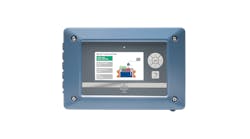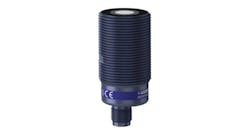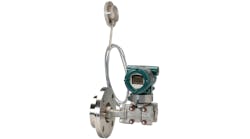Regarding “Polymer reactor level measurement,” the primary advantage of radiation-type measurements is that the source and detector avoid contact with process material, making them immune to the high temperature and pressure associated with the reaction process. They are not affected by corrosive or abrasive properties of the process. They are also immune to buildup associated with many of these processes. In the case of fluidized catalyst/vapor phase reaction processes, radiation-type measurements are often the most reliable and accurate as the fluidized mass may not generate a significant or consistent pressure differential.
Disadvantages of radiation measurements primarily involve government regulatory requirements around ownership. Other responders listed most of these accurately. Most suppliers provide resources to assist their clients with regulatory compliance.
In the article, Alex Varga says, “1. The instrument rays have to shine through the walls of the reactor so the receiver can absorb them, but the radioactive beam is not concentrated in one point like a laser, so sometimes you will have scattering of the radioactive beam, which could harm personnel.”
This can be a valid concern, especially at the bottom of the source beam. Since the vessel surface is not perpendicular to the radiation beam, some of the gamma energy will be reflected instead of penetrating the vessel. Depending on personnel access immediately below the beam, this reflected radiation may need to be mitigated for safety reasons.
Varga continues, “2. Generally, reactors have extremely thick walls requiring a very high-energy source, which over time may make the reactor walls radioactive around the beam area.” Under no circumstance will exposure to gamma radiation of any intensity make the reactor wall radioactive. The only way material can become radioactive is for the isotope to leak from the source capsule and contaminate its surface. Industrial capsules are double-encapsulated to prevent this from occurring. While intense radiation can degrade some materials (such as plastics), vessels constructed from steel and other metal alloys are not affected. Radiation-based measurements are completely safe for a very wide range of process vessels.
Varga also says, “3. Most radioactive systems need to be close if not in contact with the surface of the walls of a hot reactor. This could damage the source, which could cause radiation to leak.” The industrial source capsules used to retain isotopes are normally constructed from 316 stainless steel, which retains corrosion resistance up to 500-550 °F. Since the source is contained deep inside the source holder, radiant and conducted heat from hot reactors can’t compromise the capsule’s corrosion resistance. Leakage is virtually impossible. Heat is a concern for some source holder constructions as it can degrade protective coatings and lead to surface corrosion. We recommend that the insulation used to protect personnel and other equipment be left in place between the vessel and source holder. If heat transfer can't be mitigated, we recommend stainless-steel construction for the source holder.
Chris Willoughby
product manager, nuclear
VEGA Americas
[email protected]

Leaders relevant to this article:


